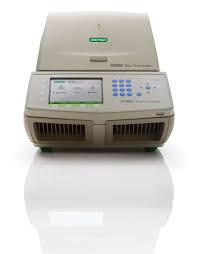With classical methods it is not possible to distinguish between ordinary cotton and genetically modified cotton because the difference can only be found in the DNA structure of the fibre. The same methods are also not suitable, for example, to reliably demonstrate the difference between flax and hemp. Methods based on the PCR technique (polymerase chain reaction) have already shown that they can differentiate between wool, cashmere, yak wool and their blends.
The lack of a reliable testing method opens the door to numerous fraudulent practices and without a solid method, it is impossible to to sell genetically modified cotton as ordinary or even organic cotton. The flax industry is also confronted with the practice of selling the much cheaper hemp fibres as flax fibre.
Centexbel solves this problem by using the PCR technique (polymerase chain reaction) which has very specific can detect DNA sequences. We do this in two steps:
- complete DNA extraction of plant samples and finished textiles
- amplification by PCR of certain sequences from samples containing species of interest
Principle
This device to amplify specific DNA sequences allows us to determine very precisely the biological origin of fibres and check whether a fibre has been genetically modified or not.
The method relies on polymerase chain reaction in which one or more parts are specifically multiplied (or amplified) from very small amounts of DNA (a few bases) until there are enough of them to be analyse
Samples
Send your samples to:
Centexbel - Microbiological lab
Rue du Travail 5
4460 Grâce-Hollogne
Belgium
+32 4 296 82 00
g-h@centexbel.be





